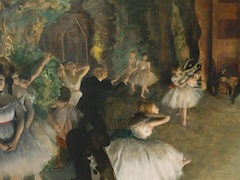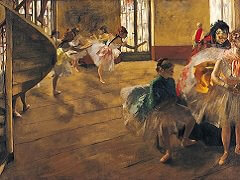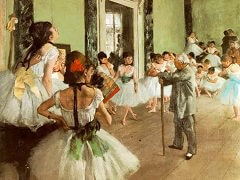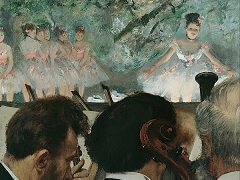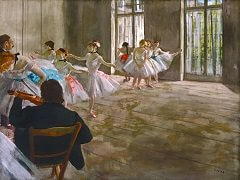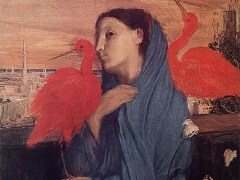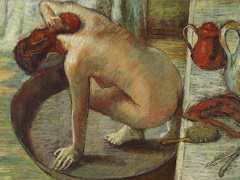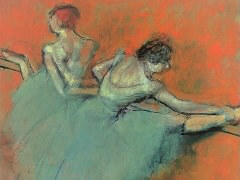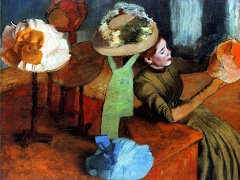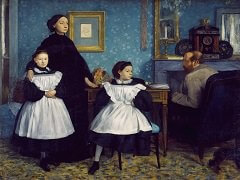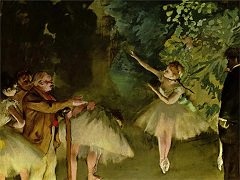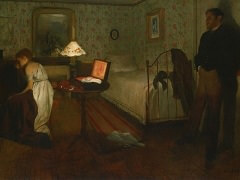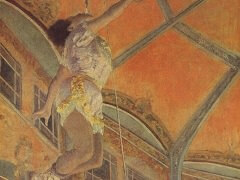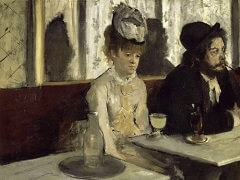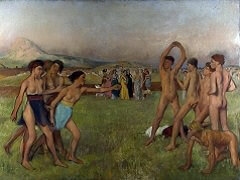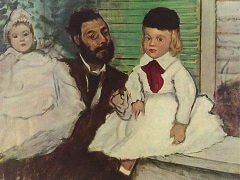Madame Rene De Gas, 1873 by Edgar Degas
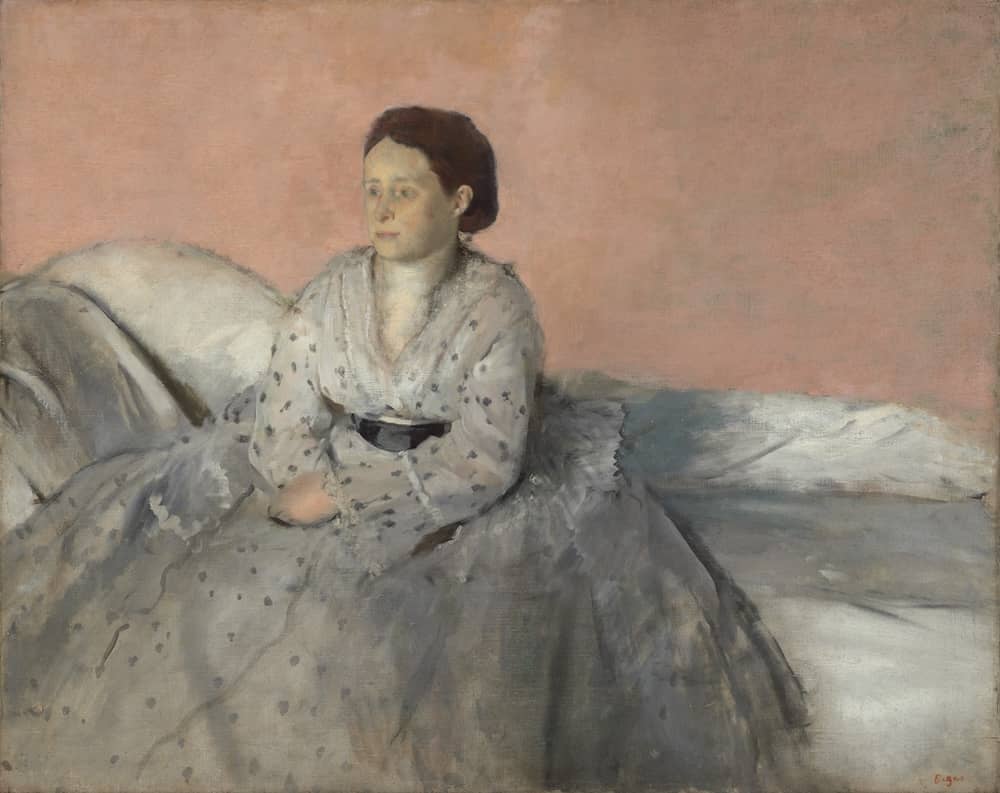
Never able to stop painting, Degas on his visit to New Orleans did several portraits of his family, of which this is the most successful. He grumbled a good deal over them. "The family portraits," he wrote to a friend, "they have to be done more or less to suit the family taste, by impossible lighting, very much disturbed, with models full of affection but a little sans-gene and taking you far less seriously because you are their nephew or their cousin." But his sympathy for his sister-in-law, Estelle Musson, hopelessly blind, here created a subtle and delightful portrait.
Degas' brush never moved more deftly or lightly than in this silvery portrait. John Rewald, who studied these American subjects, believes that the artist painted her just before the birth of her fourth child, for whom Degas was to stand as godfather; and that her ample gown was chosen to hide her condition. But there is an artistic, as well as a biographical side, to such a composition. The artist found "the tenderness of the eighteenth century" in the manner of his New Orleans family and there is something of the grace and delicacy of another age which he gave to the sitter. Perhaps, as has been suggested, she is listening to music, for Degas often painted people at these moments. She was herself a talented musician and loved opera. Beyond that he has managed to suggest, in a most convincing way, the loneliness of the blind - the overly calm pose, the sightless, open eyes, turned away from the spectator. This feeling accords strangely, but effectively, with the exquisite light which fills the canvas, and the delicate reiteration of the whites and greys and pale rose in the color scheme.

